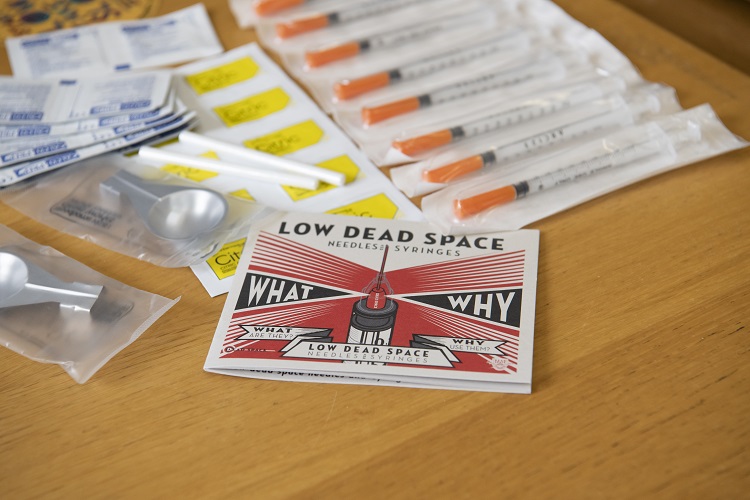11 June 2019
A paper describing a project to implement research findings using materials co-designed by Bristol Drugs Project services users has been published in Harm Reduction Journal. The project focused on promoting the use of low dead space injecting equipment and other harm reduction practices through the co-designed materials.

It was a collaboration between NIHR Health Protection Research Unit (HPRU) in Evaluation of Interventions at the University of Bristol, NIHR CLAHRC West, Bristol Drugs Project (BDP) and Exchange Supplies.
The paper was co-written by the service users themselves, alongside researchers. It describes the process of involving people who inject drugs in the design process, supporting them to steer the design, from initial look and feel to the messaging and language used. Working closely with the intended audiences means the materials have been tailored to their needs and preferences, so will have a greater impact and resonance with them.
In the paper, the authors conclude: “Placing peers at the heart of this project was essential to ensuring the materials were appropriate, engaging and avoid unintentionally stigmatising or alienating the intended audience. We recommend that others planning similar work include peers in the entire project to support their meaningful contribution.”
Low dead space injecting equipment has less space between the needle and the plunger after injecting. Blood and drug remain in this space, so if needles are shared the risk of spreading blood borne viruses such as HIV and Hepatitis C is lower when there’s less space for blood to be left in the equipment. The traditional injecting equipment with detachable needles supplied by needle and syringe programmes has a higher volume of dead space.
Earlier research by NIHR HPRU in Evaluation of Interventions at the University of Bristol and NIHR CLAHRC West found that people who inject drugs would be willing to switch to this safer equipment, if the benefits were explained and they were introduced gradually.
The team developed posters, a booklet and animation to promote the benefits and use of low dead space equipment, and broader harm reduction messages, for people who inject drugs, the needle and syringe programmes that support them, and policymakers.
The project was funded by the Economic and Social Research Council (ESRC) and overseen by a steering group that included Bristol Drugs Project, Exchange Supplies, Public Health England, the Bristol Health Partners Drug and Alcohol Health Integration Team (HIT), CLAHRC West and the HPRU.
The final products are now available to download from Exchange Supplies’ website. Exchange Supplies is a social enterprise that has pioneered the use of detachable low dead space equipment among people who inject drugs.
Paper:
Co-design of harm reduction materials for people who inject drugs to implement research findings by Deborah Hussey, Zoe Trinder-Widdess, CassieDee, Darren Bagnall, Tatty Bojangles, Joanna May Kesten. Published in Harm Reduction Journal
Further information
About the NIHR Health Protection Research Unit in Evaluation of Interventions at the University of Bristol
The Health Protection Research Unit (HPRU) in Evaluation of Interventions, based in Population Health Sciences at the University of Bristol, is part of the National Institute for Health Research (NIHR) and a partnership between University of Bristol and Public Health England (PHE), in collaboration with University College London, Cambridge Medical Research Council (MRC) Biostatistics Unit and University of the West of England. We are a multidisciplinary team undertaking applied research on the development and evaluation of interventions to protect the public’s health. Our aim is to support PHE in delivering its objectives and functions. Our focus is on the PHE priority area of infection. Follow us on Twitter: @HPRU_EI
About NIHR CLAHRC West
The NIHR Collaboration for Leadership in Applied Health Research and Care West (NIHR CLAHRC West) conducts applied health research and implements research evidence, across the West of England, nationally and internationally. Its researchers work with partner health provider organisations, including local NHS and public health, the wider health and care sector and other CLAHRCs and academic groups. Its research has real-world application to improve health and healthcare, across the West and further afield.